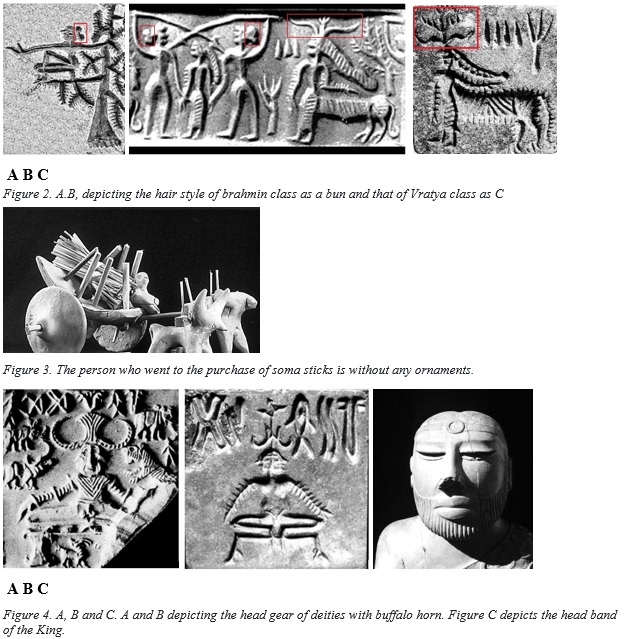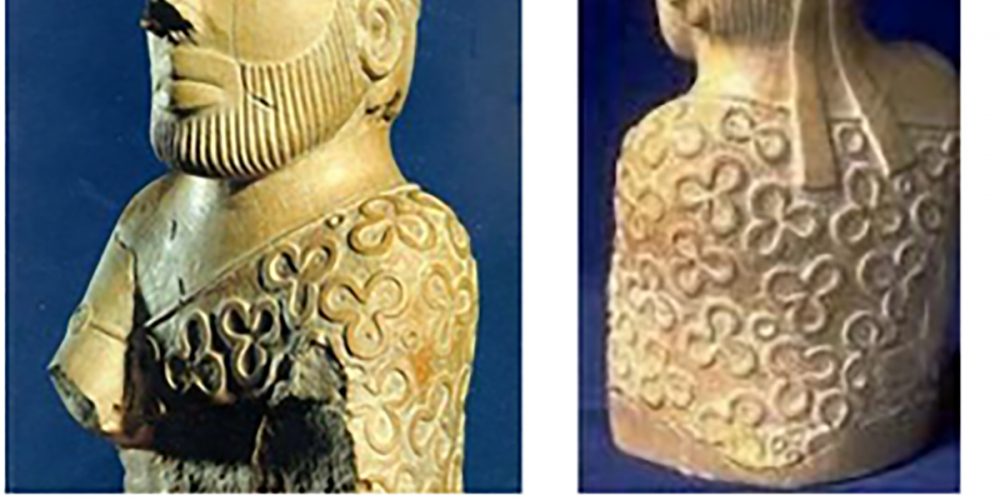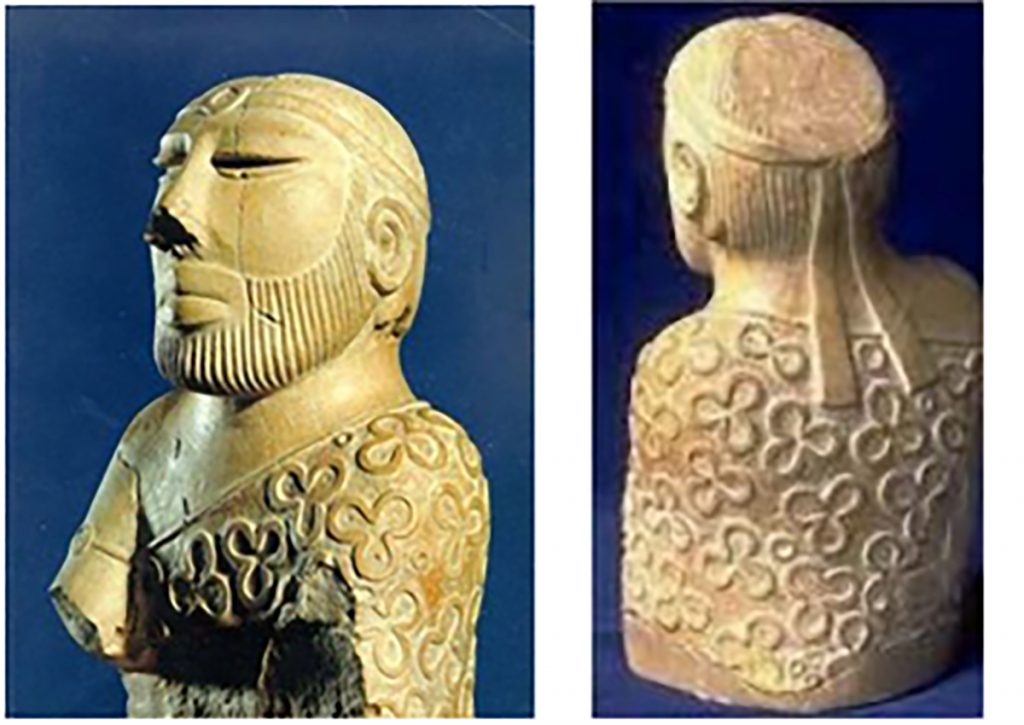Several scholars and academicians post excavation of Indus sites, got inspired by the grandeur of planned dwelling site. The artifacts, murals, pottery and the most intriguing seals of this magnificent civilization looked way advanced and ahead of time. Obviously, it implies a miss match with their understanding and the reality. Does this mean the existing civilization in the land of Bharata was inferior to those of the invaders? It was said so by scholars though not affirmatively that Aryans were invaders or transited from other countries believed to be more advanced. Vedas being indigenous to the land of Bharata, (which included present day India and the adjoining land mass) is more appropriate linkage that ought to have been used while trying to understand the civilization whether it was imposed by foreigners or evolved by locals. The analysis of artifacts was completely focused on civilization outside the boundary of the then land of Bharata which is a huge dis connect. Eighty years of research have been on objects as discrete entities without connecting to a basic and a larger cultural ethos and practices of those times. This lack of connectivity has resulted in a variety of controversies amongst the scholars.
My research work is attempted with a new approach in bridging the disconnect around the hitherto theories. Understanding of Veda’s helped me in establishing a very close linkage of the seals, figurines, artifacts, pottery and symbols to the Vedic rituals.
Introduction
The Indus seals, also called Harappan seals, and the artefacts excavated belonging to the period of Indus civilization are highly sophisticated heritage artifacts. Dating as far back as 3500 years approximately the seals and figurines with finely executed carvings are the archaeological proof of the civilization that existed in that ancient period. These findings mirror the religious, social and intellectual excellence of Indus valley civilization. The very popular bust of a male figure excavated from Mohenjo-Daro, an archaeological site in the province of Sindh, Pakistan has evinced keen interest by public on knowing who he is. King or a priest king? He is called King priest thus far which is not a convincing term because a king never did the work of a priest and vice versa. They belonged to different varnas.
The Harappans were close contemporaries of Sumerians and early Babylonians in Mesopotamia and Minoan civilization in the Mediterranean. For such a highly developed culture of Indus civilization, people had a writing system like other civilizations but was distinctly different from the other forms of writing. Despite the efforts of many scholars for more than eight decades, it is yet to be deciphered.
This article invokes interest for larger debate on why the Indus script and figurines were compared with the script of other ancient civilizations and propagating that Aryans were not indigenous to the land of Bharata. A study of seals and figurines keeping the Vedic texts as background prove how truly the seals, symbols, pictures and the figurines are a true representation of the knowledge compiled in the Vedas. The study or understanding the significance of the male bust figure, though different from the bull seals, is indirectly connected to the seals because they all belong to the same period and were made based on what customs and knowledge were in practice. A figurine in pictorial form explains many facts in a precise way what otherwise would have been a lengthy chapter to be understood.
The decipherment of the unique Indus script has remained controversial as there is no consistency in the logic established in its interpretation. The prominence of a mythical one horned bull that never existed and calling it as unicorn does indicate it is beyond what has been understood till date.
The question regarding why Indus script is not deciphered and why the significance of figurines are not explained in a convincing way comes with draw backs in the analysis. The figurines similar to the objects of Indus period like the cart with the bundle of sticks or pots are more easily interpreted as toys for children rather than connecting it with the true picture of who is the person driving the cart, why he carries pots, or what kind of sticks are being carried, why there are two types of carts, etc. as described in Vedas. Unlike other ancient scripts which are lengthy, the inscriptions on Indus seals are extremely brief, in some it is just 2-3 signs. Some seals have repetitions of same symbol. The bull picture is indispensable part of the seals and symbols are different in each seal.
Different researchers have come out with different analysis. The scholars do not agree upon one opinion and hence it is defensive methodology. Each analysis fails to address what constitutes the theme of decipherment and the literary basis for the analysis. The values given to a sign does not show a convincing and persistent interpretation when applied on different seals with added marks on a basic symbol. Though many signs occur frequently like strokes, appears to be as mathematical signs of number representations, the analysis lack clarity with what theme the numbers are associated. The signs are pictures of both animate and inanimate objects in different combinations. Many are suggestive pictures and not true pictures according to S.R Rao (The language and Script of Indus Civilization, 2011). The decipherer is at a loss to know whether all signs should be read as ideographs in which ideas or actions are indicated or as logographs which stand for words or signs with phonetic equivalents. He also says about the problems created by Dravidian origin of Indus seals which has resulted in sacrificing objectivity on the part of most scholars attempting decipherment.
Though attempts were made to decipher the symbols inscribed, any approach for why the bull was part of the seal, why the embellishments on bull’s neck as well as the surface designs on the structure in front varied from seal to seal have not been addressed as much as the symbol decipherment. The interpretation of script like symbols or the figures on seals ignoring the bull’s picture which occupy more than 70% of the seal has been ignored and not given the due concern or convincing analysis. These efforts are like watering the leaf parts of a plant, forgetting to feed the most vital part – the roots. Many seals and figurines depict figures in action and the precise literary source for story depiction has not been considered but interpreted or connected with the much later puranic episodes.
The icon of Mohenjo-Daro bust
The icon of the kingly looking bust from Mohenjo-Daro (Figure 1), measures 17.5 CMS in height and 11CMS in width is carved from steatite also known as soap stone. The figure depicts a very handsome and calm face with a trimmed beard and clean-shaven upper lip. His nose is prominent, full lips, and eyes though large look half closed. The hair style looks neatly back combed. The beard looks freshly trimmed and shaped well. He is adorned with a head band with a central inlay of stone ornament and a similar smaller band is on his open right arm. He wears a blanket of animal skin that looks like leopard skin in design or it could be designed blanket full of trefoil design with a center.
Since the figure highlights three facts like the trimmed beard, the conspicuous-the head and arm band, and thirdly the designed cover worn as a blanket, the approach needs to proceed on literary sources on the fact who wore these head bands and why beard trimming was given so much importance.
The head band guides to the fact that it is the ornament called “Mastaka bhooshana”. Mastaka is head and bhooshana means a decorative ornament tied around the head with an inlay of precious stone. About the ornaments that were used to tie around the body by kings, the Ch. 23 of Natya shastra classifies it as Shirovestana type. Natyashastra is much later in time but based on what was in practice before its compilation (later than 500 B.C). Similar decorative arm band called “angada” is seen in the figure which is used by high ranking or a royal person.
It is interesting to note that an in-depth study of Harappan seals, sites and figurines is slowly and steadily uncovering the veil of the current understanding and exposing it as a reflection of its association with Vedic knowledge and practice.
Varieties of head embellishments and its classifications
The priestly class is depicted to tie their hair into a bun (Fig. 2. A and B) as can be seen in the Indus seals and they never wore any type of head ornaments. The head embellishments are marked as red boundary in the pictures below. The person who went to purchase Soma sticks does not have any head band (Fig.3). The pictures of Kesins (Rigveda 10. 136) or the Vratya class of people are depicted in the seals (Fig.2.C), depict a different type of head decoration with long matted hair like that of a snake, flower decorations and a turban .The deities in Indus seals depict a different type of head gear (fig. 4.A,B) like the horn of buffalo with a twig of Aswattha leaves (Ficus Religiosa). Only the king depicts (Fig 4.C) the head band Mastaka Bhooshana with an inlay of stones.
 The strong looking male bust could be that of a king and not a priest because priests are depicted in seals with the hair tied into a bun.
The strong looking male bust could be that of a king and not a priest because priests are depicted in seals with the hair tied into a bun.
A Vedic Connection to the attire
A study of the facts related to trimming of the beard are discussed in the Satapatha brahmana, and Apastambha srauta sutra, (18.22.9-11). Cutting of beard and trimming the hair for a king was observed as one of the important rituals of Somayajnas. The king or the sponsored had to observe vows of retaining facial hair after the consecration / diksha for soma yajna for more than a year or the prescribed specified period. The preliminaries for big rituals like Raajasooya yajna or Vaajapeya yajna were very elaborate and conducted for one or two years. The highlight of Rajasooya was the Abhihsechaniya where sacred water collected from many rivers in wooden vessels of four different trees was poured over the king. later he was bathed in liquids processed elaborately with many medicinal herbs, anointed with ‘rochana’ the yellow pigment, that made him a dikshita. King had to observe certain vows for one year that concluded with Keshavapaniya ritual. He was not allowed to cut his hair because the collected essence of water and extract of medicinal herbs would have touched his hair first which gave imperial glory, divine status and ward off all diseases.
“Kesa vapaniya” means the hair cutting ceremony done by Kesha vapa the hair dresser for the king (kesa means hair, vapa is to cut off in Sanskrit). It was associated with the Atiratra or multiple days soma yajna performed before the Raajasooya yajna. Raajasooya was the anniversary celebration of coronation of the king. Raajasooya – the rite of royal consecration, was a complex ceremony that lasted for over an year with long succession of seven distinct yajnas called pavitra, agnistoma, abhisecaniya..and so on as preliminaries to the big yajna. Each one was a big scale Srauta yajna sponsored by the king and performed in the yajna shala. Many priests participated in the series of yajnas and the sacrificial fee was a huge amount. Great emperors and kings had to observe the vow of not cutting the hair or shave the beard for one year after performing the consecration or the deeksha up to the coronation rite. The purpose of yearlong performance of smaller yajnas by the king was to the acquisition of spiritual knowledge. He should first harness his mind and intellect to realize the omniscient God and show it to others. Keshavapaniya was an important ritual observed in Soma yajna where the beard and hair of the king was trimmed. The pressing of soma sticks went along with other rituals like this. The elaborate ritual and Vedic recitation of stanzas go in decreasing order from twenty-one verses in the morning to seventeen verses at midday, fifteen to nine verses at the third pressing like the stages of hair trimming.
Raajasooya is a Maha Soma yajna like Aswamedha, Vishwa shanti or Vishwajit yajnas, performed for the prosperity and peace of a kingdom or even universe on a very large scale and magnitude. Raajasooya was performed by only a kshatriya king which commences on the first day of waxing period of Phalguna masa (12th month of Hindu almanac). Abhisekha of pouring holy liquid on the king was the highlight beyond which the king had to observe certain vows. (ref. “Yajna A Comprehensive Survey” by Yoga Publication Trust Bihar,2006)
The chief priest chants the “Mahendra shastra”. This stotra is in honour of Indra who was acknowledged as the super king and emperor of Devas. The chanting was about the king being equated to Indra. Yajurveda says the king was to be elected by people like Indra was the choice of people. (Ref. The Full Text of “The Yajur Veda” translated by Devi Chand – 1959.)
Ch. 125.22-23 and 126. 32-33 of Yajurveda says about how Indra was chosen as a leader:
“Elect him as a ruler who is lustrous like the Sun in fore front of dawn, the giver of wealth, master of riches, bestower of wisdom, son of strong father and controller of his senses. Elect him as the ruler, who is the protector of the whole world, springs to life in its midst and fills heaven and earth opposing foes, Cuts the enemy into pieces like sun cuts the dense clouds and he is respected by the five classes of persons”.
In Ch. 130, of Yajurveda it says, “He alone is fit to rule who spreads knowledge, wages battles on earth, expert statesman endowed with noble qualities and speedily preaches religion”.
This indicates that the people chose Indra to be their king and nurtured him with Soma juice to grow stronger and kill the demons who had hoarded the clouds causing draught on earth. Since Indra could fight and released water from the skies, and help the community, he was elevated to the status of a deity. The interesting thing during the Vedic times is in having a structured governance system for administration and people’s wellbeing.
The king after the abhisekha and diksha will wear a bow, arrow and enjoy certain chariot games. He will be given the tiger or animal skin as a shawl, a gold chain and shoes made or boar skin. In the year long period after commencement several small homas were to be performed including chaturmasya yajna and 12 ishtis (where all four categories of priests participate), Pashu yaga and Soma yaga. The chief priest holds the hand of the king announces the name of the king and declares the provinces under the rule of the king who then ascends the golden throne.
About the nature of kingship, Aitereya Brahmana associated with Rig Veda describes about 8 types of rajya / province that offer care and comfort to the people. To quote one or two among them, “Samrajya” was the large area ruled by the king. He should subdue the neighboring kings and establish sovereignty. He should rule “Swarajya”, which is free from the attack of invaders. “Maharajya” was the province in which several smaller provinces were integrated into a Ganatantra prajarajya and ruled by able ministers.
The seal depicts the king at the time of royal consecration. He can be identified as a king by the distinct ornament on his forehead and arm symbolizing his kingly status and the blanket or Kambala, also called “Pandva”in Sanskrit at unction ceremony (Katyayana Srauta sutra, XV.5.12) that is worn over his lower Tarpya dress. Tarpya was a special material for dress at the unction ceremony made of a type of vegetable substance or the plant yarn is indicated in Apastambha srauta sutra 18.5.7. This Tarpya or Tapa garment was made by repeated rounds of soaking the plant yarn or tree substance in clarified butter and beating it to spread until thin and soft which was considered as a formal wear during auspicious ceremonies. Kambal was a blanket made of wool or animal skin to cover the upper body. The designs of the kambal that the man is adorned with resemble the design of leopard’s skin. It may also be the tarpya garment with that design or an animal skin.
Conclusion
The trimming of facial hair and hair dressing of the king was observed as an important part of big sacrifices, which went along with the recitation Vedic stanzas. The trimmed beard with the head band Mastaka bhooshana suggests Keshavapaniya ritual of the king at the time of Raajasooya yajna. The figurine represents the King.
References
- Symbolography in Indus seals by Rekha Rao. Print Book: https://www.amazon.com/dp/1549709208 eBook: https://www.amazon.com/dp/B016QQKBQE
- Encyclopaedia of Oriental Philosophy and Religion: A Continuing …, Volume 1,edited by Nagendra Kr Singh, A. P. Mishra.
- A Dictionary of the Vedic Rituals, Chitrabhanu Sen, Concept Publishing Company, New Delhi, 1978 (reprint 2001)
- The Religion and Philosophy of the Veda and Upanishads, A. B. Keith, Harvard oriental series, No. XXXII, Cambridge, 1925
- Picture source: Harappa.com.
Disclaimer: The opinions expressed within this article are the personal opinions of the author. IndiaFacts does not assume any responsibility or liability for the accuracy, completeness, suitability, or validity of any information in this article.
Independent Researcher and Indologist, Mysore


